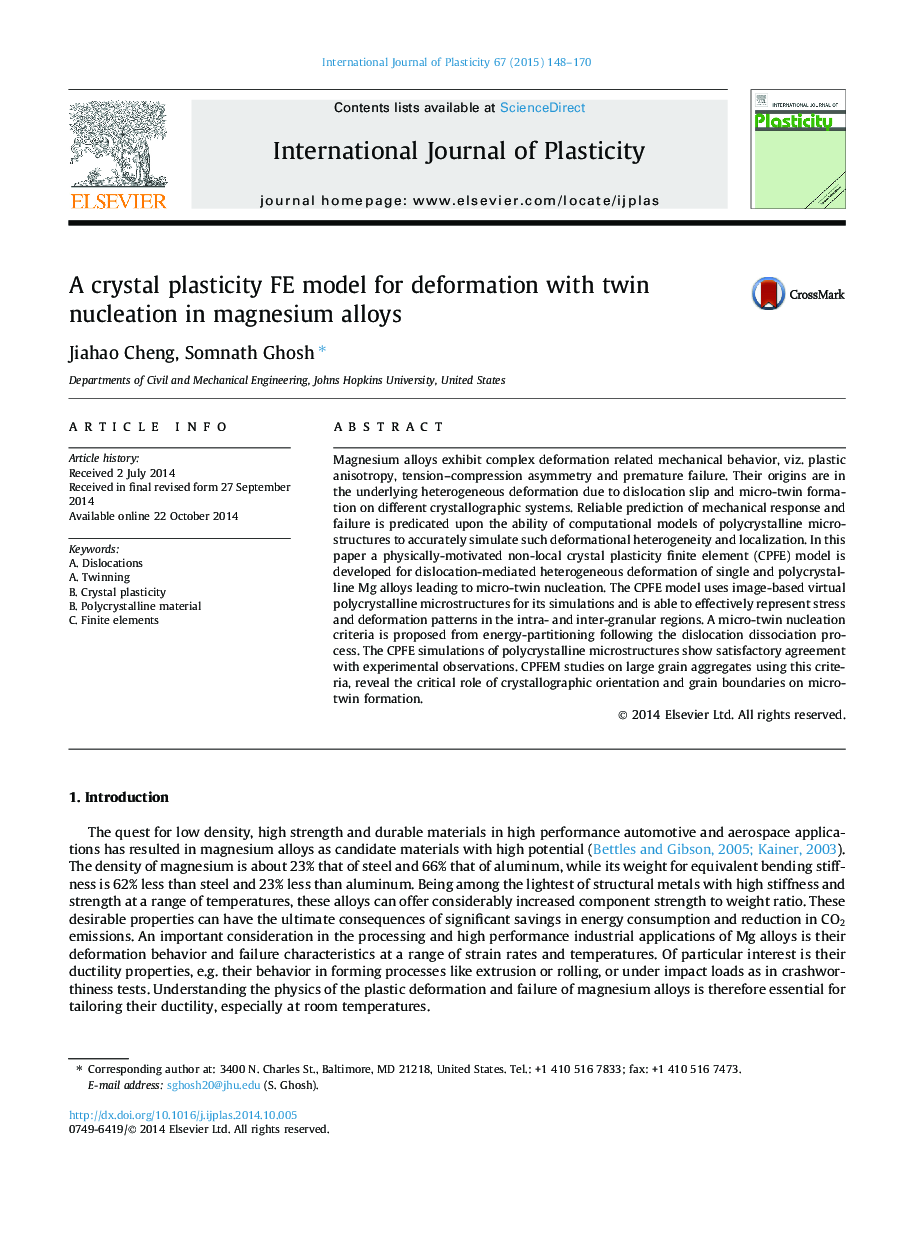| Article ID | Journal | Published Year | Pages | File Type |
|---|---|---|---|---|
| 789070 | International Journal of Plasticity | 2015 | 23 Pages |
•Physically-motivated non-local crystal plasticity finite element (CPFE) model.•Dislocation-mediated heterogeneous deformation of single and polycrystalline Mg alloys (AZ31).•Image-based virtual polycrystalline microstructures.•Micro-twin nucleation criteria from energy-partitioning for dislocation dissociation.•Satisfactory agreement with experimental observations.
Magnesium alloys exhibit complex deformation related mechanical behavior, viz. plastic anisotropy, tension–compression asymmetry and premature failure. Their origins are in the underlying heterogeneous deformation due to dislocation slip and micro-twin formation on different crystallographic systems. Reliable prediction of mechanical response and failure is predicated upon the ability of computational models of polycrystalline microstructures to accurately simulate such deformational heterogeneity and localization. In this paper a physically-motivated non-local crystal plasticity finite element (CPFE) model is developed for dislocation-mediated heterogeneous deformation of single and polycrystalline Mg alloys leading to micro-twin nucleation. The CPFE model uses image-based virtual polycrystalline microstructures for its simulations and is able to effectively represent stress and deformation patterns in the intra- and inter-granular regions. A micro-twin nucleation criteria is proposed from energy-partitioning following the dislocation dissociation process. The CPFE simulations of polycrystalline microstructures show satisfactory agreement with experimental observations. CPFEM studies on large grain aggregates using this criteria, reveal the critical role of crystallographic orientation and grain boundaries on micro-twin formation.
